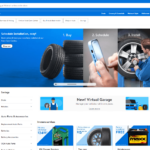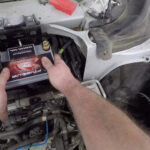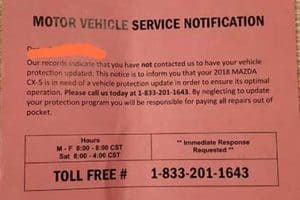When purchasing a new or used Toyota vehicle, it is important to have access to the original window sticker.
The window sticker, also known as a Monroney label, contains important information about the vehicle, including its manufacturer’s suggested retail price (MSRP), engine and transmission specifications, standard equipment and warranties, optional equipment and pricing, and fuel economy ratings.
The window sticker is required by U.S. law to be displayed on all new cars, but it can often be difficult to obtain a copy of the original sticker for a used car.
Fortunately, there are a few ways to obtain a copy of the original window sticker for a Toyota vehicle. One way is to use the vehicle identification number (VIN) to look up the vehicle’s specifications on the Toyota Official Site.
Another way is to use a VIN decoder tool, such as the one provided by Toyota VIN Lookup, to find out the model, year, engine, and other details of the Toyota vehicle.
Additionally, websites like CarEdge and MonroneyLabels.com offer free tools to generate a copy of the original window sticker for Toyota vehicles.
By using these resources, Toyota owners can access important information about their vehicles and ensure that they are getting the most accurate information about their cars.
Understanding the Toyota Window Sticker
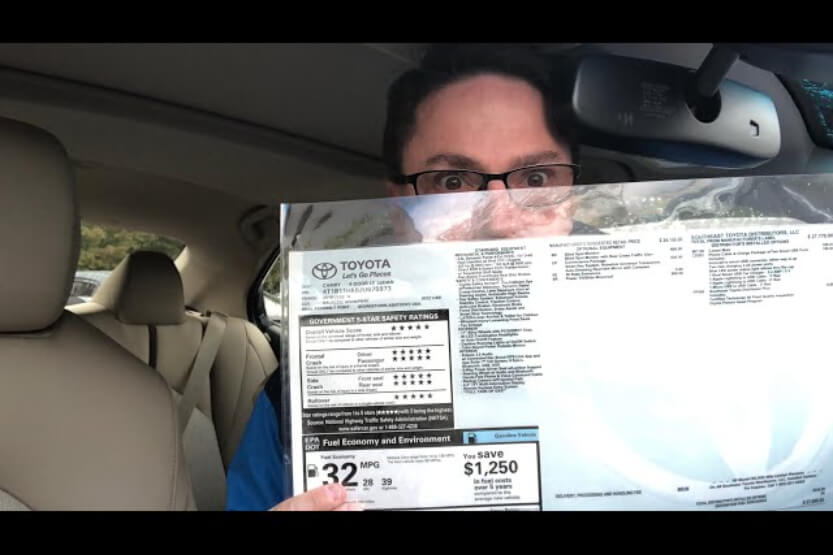
When shopping for a new Toyota, it’s important to understand the information presented on the window sticker.
As per Car and Driver, the window sticker, also known as the Monroney label, is required by law and provides important details about the vehicle. In this section, we will cover the basics of window stickers, decoding the VIN, and Toyota window sticker features.
The Basics of Window Stickers
The window sticker provides information about the manufacturer, features, specifications, and options for the vehicle. It also includes the vehicle identification number (VIN), which is a unique 17-character code that identifies the vehicle.
The window sticker is typically located on the driver’s side of the vehicle and can be easily viewed from outside the car.
Decoding the VIN
The VIN is a 17-character code that provides detailed information about the vehicle.
The first three characters represent the manufacturer, the next five characters represent the vehicle attributes such as model, engine type, and body style, and the last nine characters are a unique identifier for the vehicle.
Toyota VINs typically start with “J”, which represents the country of origin, Japan.
Toyota Window Sticker Features
Toyota window stickers include a variety of features that can help you understand the vehicle’s specifications and options. Some of the key features of a Toyota window sticker include:
- QR Code: Some Toyota window stickers include a QR code that can be scanned with a smartphone to view the original window sticker online.
- Packages: Toyota window stickers list any packages that were added to the vehicle, such as a technology package or a towing package.
- 17 Characters: The VIN is a 17-character code that is unique to each vehicle and provides detailed information about the vehicle’s attributes and history.
- Original Window Sticker: The window sticker provides the original information about the vehicle when it was first sold, including the price, options, and specifications.
- Monroney Label: The Monroney label is required by law and provides important information about the vehicle, including the manufacturer’s suggested retail price (MSRP), fuel economy, and safety ratings.
Understanding the information presented on the Toyota window sticker can help you make an informed decision when purchasing a new vehicle.
By decoding the VIN and understanding the features of the window sticker, you can ensure that you are getting the vehicle that meets your needs and preferences.
Toyota Vehicle Identification

Toyota vehicles have a unique identification number known as the Vehicle Identification Number (VIN). This number is used to identify each vehicle and contains information about the vehicle’s year, make, model, and other important details.
Understanding the VIN structure and locating the VIN on your Toyota is important for various reasons, including checking the vehicle’s history, obtaining a window sticker, and ensuring that the vehicle is not stolen.
Understanding VIN Structure
As per Autocheck (.com), a VIN is a 17-character code that is made up of both letters and numbers. The VIN is divided into three sections: the World Manufacturer Identifier (WMI), the Vehicle Descriptor Section (VDS), and the Vehicle Identification Section (VIS).
The first three characters of the VIN identify the country where the vehicle was manufactured and the manufacturer. The fourth to eighth characters provide information about the vehicle’s make, model, and body style.
The ninth character is a check digit that is used to verify the VIN’s validity. The remaining characters provide information about the vehicle’s production number, engine type, and other details.
Locating the VIN on Your Toyota
The VIN can be found in several locations on your Toyota vehicle. The most common location is on the driver’s side dashboard, visible through the windshield.
The VIN can also be found on the sticker inside the driver’s door jamb, on the DMV registration papers, on the insurance card, and on the vehicle title. It is important to note that the VIN on the title and registration papers should match the VIN on the vehicle.
In conclusion, understanding the VIN structure and locating the VIN on your Toyota is important for various reasons. It provides important information about the vehicle’s history, helps obtain a window sticker, and ensures that the vehicle is not stolen.
The VIN can be found in several locations on the vehicle, including the driver’s side dashboard, driver’s door jamb, DMV registration papers, insurance card, and vehicle title.
Pricing Information
When it comes to purchasing a new Toyota vehicle, understanding the pricing information is crucial. This section will provide an overview of the pricing details that are available on the Toyota window sticker.
MSRP Details
The MSRP (Manufacturer’s Suggested Retail Price) is the price that Toyota recommends dealerships sell their vehicles for. This price is listed on the Toyota window sticker and is based on the base model of the vehicle with no additional options or packages.
It is important to note that the MSRP does not include any taxes, fees, or other charges that may be added by the dealership.
On the Toyota window sticker, the MSRP is listed in the upper left-hand corner. It is important to understand that the MSRP is not a set price and can vary depending on the dealership and location.
Understanding Pricing Breakdown
The pricing breakdown on the Toyota window sticker provides a detailed look at the cost of the vehicle and any additional options or packages that have been added. This section is located in the middle of the window sticker and is broken down into several categories.
The first category is the base price, which is the cost of the vehicle without any additional options or packages. The next category is the delivery, processing, and handling fee, which covers the cost of delivering the vehicle to the dealership and preparing it for sale.
Additional categories may include optional equipment, accessories, and packages. These sections will list the cost of each item and provide a total cost for all additional options and packages.
It is important to note that the pricing breakdown on the Toyota window sticker is not negotiable and is based on the manufacturer’s suggested retail price. However, dealerships may offer discounts or incentives that can lower the overall cost of the vehicle.
Overall, understanding the pricing information on the Toyota window sticker is essential when purchasing a new Toyota vehicle. By knowing the MSRP and pricing breakdown, buyers can make informed decisions and negotiate the best deal possible.
Vehicle Specifications and Options
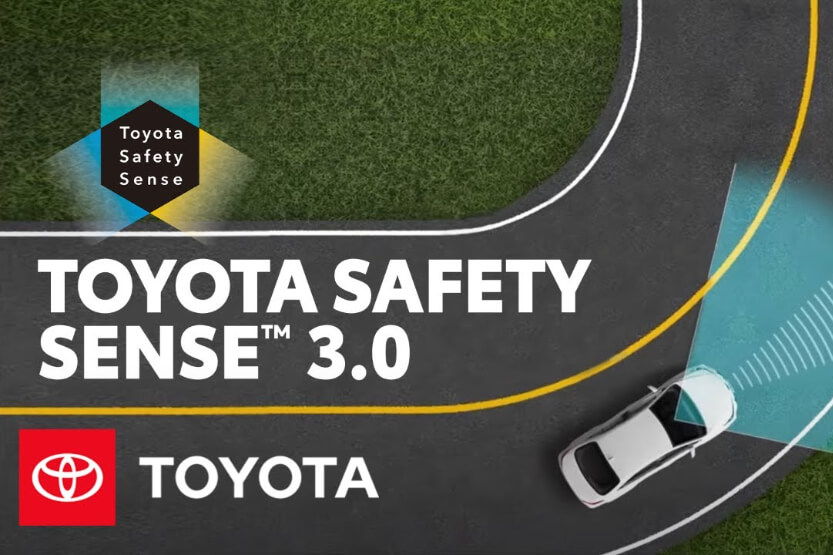
When buying a Toyota vehicle, it is important to know the specifications and options available for that particular model. The window sticker is a useful tool that provides detailed information about the vehicle, including its standard and optional features, trim levels, and accessories.
Standard Features and Equipment
The standard features and equipment of a Toyota vehicle vary depending on the model and trim level. However, some common features include air conditioning, power windows, and a rearview camera.
Additionally, most Toyota vehicles come with Toyota Safety Sense, a suite of advanced safety features that includes lane departure warning, automatic emergency braking, and adaptive cruise control.
Optional Equipment and Packages
Toyota vehicles offer a range of optional equipment and packages that allow buyers to customize their vehicles to their specific needs. Some popular options include a sunroof, leather seats, and a premium audio system.
Toyota also offers several packages that bundle together popular options, such as the Convenience Package, which includes a power liftgate and a blind spot monitor.
Trim Levels and Accessories
Toyota vehicles come in several different trim levels, each with its own set of standard and optional features.
Some popular trim levels include the LE, XLE, and Limited. In addition to the standard and optional features, Toyota also offers a range of accessories that allow buyers to further customize their vehicles. Some popular accessories include roof racks, all-weather floor mats, and cargo organizers.
Overall, the window sticker provides a wealth of information about a Toyota vehicle’s specifications and options. By carefully reviewing the window sticker, buyers can ensure that they are getting the features and equipment they want in their new vehicle.
Safety and Warranty Information
Recalls and Safety Concerns
Toyota takes safety seriously and is committed to providing safe and reliable vehicles to its customers. If there is a safety concern with a Toyota vehicle, the company will issue a recall to address the issue promptly.
Customers can check if their vehicle is affected by a recall by entering their Vehicle Identification Number (VIN) on the Toyota website.
In case of a recall, Toyota will notify customers by mail and provide instructions on how to get the issue fixed free of charge. Customers can also contact their local Toyota dealer or call the Toyota Customer Experience Center at 1-800-331-4331 for more information.
Warranty Coverage Details
Toyota offers comprehensive warranty coverage for its vehicles to provide customers with peace of mind. The warranty coverage includes a basic warranty, powertrain warranty, and roadside assistance. The basic warranty covers the vehicle for 36 months or 36,000 miles, whichever comes first.
The powertrain warranty covers the engine, transmission, front-wheel-drive system, rear-wheel-drive system, and hybrid components for 60 months or 60,000 miles, whichever comes first.
In addition, Toyota offers roadside assistance for 24 months/unlimited miles. The roadside assistance includes services such as lockout protection, flat tire changes, jump starts, and towing.
It is important to note that the warranty coverage is subject to certain limitations and exclusions. Customers should refer to their vehicle’s warranty booklet or contact their local Toyota dealer for more information on the warranty coverage.
Overall, Toyota’s commitment to safety and warranty coverage underscores the company’s dedication to providing customers with reliable and high-quality vehicles.
To Summarize
In summary, a Toyota window sticker is a label that provides detailed information about a vehicle’s specifications, features, and options. The sticker is usually placed on the driver’s side window and can be used to verify the authenticity of the vehicle and its features.
To obtain a Toyota window sticker, the easiest way is to use the vehicle identification number (VIN) of the car.
Once you have the VIN, you can use a free online tool to generate the window sticker. The sticker will provide you with accurate information about the car’s make, model, trim level, and options.
It’s important to note that the information provided on the window sticker is accurate at the time of the vehicle’s manufacture. Any modifications or changes made to the vehicle after that time will not be reflected on the sticker.
Overall, the Toyota window sticker is a valuable tool for anyone looking to purchase a Toyota vehicle. It provides detailed information about the car’s features and options, which can help buyers make an informed decision.

![Ford Window Sticker by VIN [How to Look Up] ford window sticker by vin](https://roadsumo.com/wp-content/uploads/2022/07/Ford-window-sticker-by-VIN-150x150.jpg)

